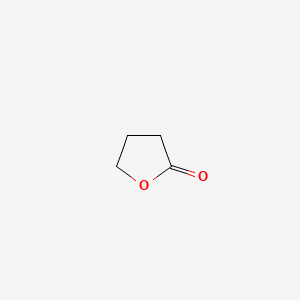| Zhu J et al. |
AvaR2, a pseudo γ-butyrolactone receptor homologue from Streptomyces avermitilis, is a pleiotropic repressor of avermectin and avenolide biosynthesis and cell growth. |
2016 |
Mol. Microbiol. |
pmid:27502190
|
| Zhang C et al. |
Characterization of N-acyl homoserine lactones (AHLs) producing bacteria isolated from vacuum-packaged refrigerated turbot (Scophthalmus maximus) and possible influence of exogenous AHLs on bacterial phenotype. |
2016 |
J. Gen. Appl. Microbiol. |
pmid:27118073
|
| Zeng J et al. |
Mechanism of azithromycin inhibition of HSL synthesis in Pseudomonas aeruginosa. |
2016 |
Sci Rep |
pmid:27075730
|
| Cheema AK et al. |
Chemopreventive Metabolites Are Correlated with a Change in Intestinal Microbiota Measured in A-T Mice and Decreased Carcinogenesis. |
2016 |
PLoS ONE |
pmid:27073845
|
| Singh N et al. |
Inhibition of fatty acid synthase is protective in pulmonary hypertension. |
2016 |
Br. J. Pharmacol. |
pmid:27061087
|
| Holm A et al. |
Pseudomonas aeruginosa N-3-oxo-dodecanoyl-homoserine Lactone Elicits Changes in Cell Volume, Morphology, and AQP9 Characteristics in Macrophages. |
2016 |
Front Cell Infect Microbiol |
pmid:27047801
|
| Slebe F et al. |
FoxA and LIPG endothelial lipase control the uptake of extracellular lipids for breast cancer growth. |
2016 |
Nat Commun |
pmid:27045898
|
| Hu PY et al. |
Elucidation of Transport Mechanism of Paeoniflorin and the Influence of Ligustilide, Senkyunolide I and Senkyunolide A on Paeoniflorin Transport through Mdck-Mdr1 Cells as Blood-Brain Barrier in Vitro Model. |
2016 |
Molecules |
pmid:26950101
|
| Kuncewitch M et al. |
Inhibition of fatty acid synthase with C75 decreases organ injury after hemorrhagic shock. |
2016 |
Surgery |
pmid:26372196
|
| Tamura M et al. |
Effects of an equol-producing bacterium isolated from human faeces on isoflavone and lignan metabolism in mice. |
2016 |
J. Sci. Food Agric. |
pmid:26455424
|
